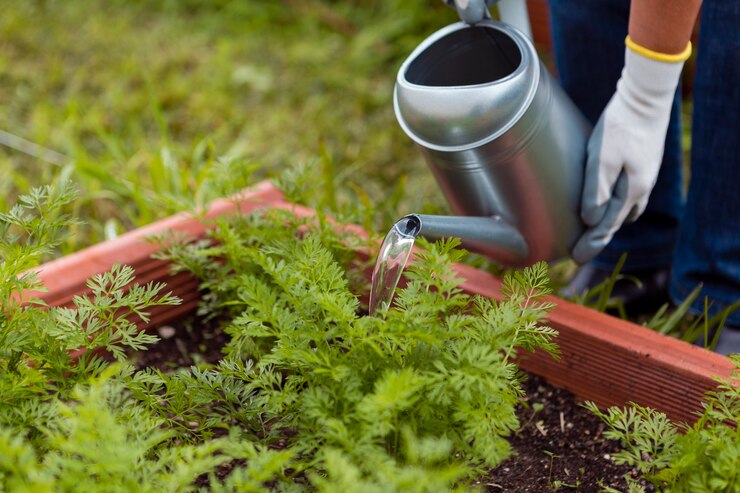Spring whispers promises of new beginnings, and what better way to celebrate than by transforming your garden into a vibrant haven? But beyond the beauty of blooming flowers and flourishing vegetables, spring offers the perfect opportunity to embrace eco-friendly practices and create a garden that’s good for you and the planet. Here’s your guide to “Spring into Green Gardening,” packed with tips and tricks to cultivate a thriving and sustainable oasis.
Preparing Your Green Canvas:

- Embrace the Power of Compost: Composting is the cornerstone of green gardening. It reduces waste by turning kitchen scraps and yard trimmings into nutrient-rich fertilizer. Set up a compost bin or pile in a shady corner and create a healthy mix of “green” (nitrogen-rich) materials like kitchen scraps and coffee grounds, and “brown” (carbon-rich) materials like leaves and twigs. This homemade goodness will nourish your plants and keep waste out of landfills.
- Plan with Purpose: Before diving headfirst into planting, take a moment to assess your garden space. Sketch a layout considering sunlight hours for different plants. Group plants with similar needs together for efficient watering and pest control. Utilize vertical space with trellises and hanging planters to maximize yield and create visual interest.
- Test Your Soil: Knowing your soil’s pH level is crucial for successful plant growth. Purchase a simple soil test kit or take a sample to your local nursery for analysis. This will help you determine if your soil needs amendments like lime for acidity or compost for added nutrients.
Planting for a Greener Future:

- Go Native! Native plants are superstars of the green garden. They are adapted to your local climate, require less water, and provide vital food and shelter for pollinators like bees, butterflies, and hummingbirds. Research native plants in your region and create a haven for local wildlife.
- Plant Powerhouses: Opt for plants known for their natural pest-repelling properties. Marigolds deter nematodes, while nasturtiums repel aphids. Interspersing these “companion plants” throughout your garden can help create a natural defense against unwanted insects.
- Seed Saving: Harvest seeds from your favorite open-pollinated plants at the end of the season. This not only saves you money but allows you to cultivate unique varieties adapted to your specific garden conditions. Seed saving also promotes biodiversity and reduces dependence on commercially produced seeds.
Watering Wisely:
- Conserve Every Drop: Water is a precious resource, especially during the hotter months. Utilize water-efficient techniques like drip irrigation that delivers water directly to the plant roots, minimizing evaporation.
- Embrace the Rain: Capture rainwater runoff from your roof in a rain barrel. This free, natural resource can be used to irrigate your plants, reducing your reliance on tap water.
- Mulch Magic: Apply a layer of organic mulch around your plants. Mulch retains moisture in the soil, reduces weed growth, and regulates soil temperature. Opt for natural materials like wood chips, shredded bark, or composted leaves.
Green Guardianship:
- Fight Pests Naturally: Before resorting to harsh chemical pesticides, explore natural pest control methods. Introduce beneficial insects like ladybugs that prey on aphids. Use insecticidal soap or neem oil sprays for targeted pest control.
- Attract the Good Guys: Plant a variety of flowering herbs and native wildflowers to attract pollinators like bees and butterflies. These tiny warriors not only create a beautiful display but also play a crucial role in plant reproduction.
- Compost Tea Power: Brew a batch of nutrient-rich compost tea by steeping the finished compost in water. This natural fertilizer can be used to boost plant growth and deter pests, keeping your garden healthy and thriving.
Beyond the Basics: Going Green All Year Round
Spring is the perfect springboard for a greener lifestyle. Here are some additional tips to keep your garden eco-friendly throughout the year:
- Upcycle with Creativity: Repurpose old containers, furniture, and even clothing for planters and garden décor.
- Embrace Solar Power: Consider solar-powered garden lights for evening ambiance and a sustainable touch.
- Recycle Right: Learn about your local recycling guidelines and ensure all non-compostable garden waste gets properly disposed of.
Spring into Green Gardening is more than just a catchy slogan; it’s a philosophy. By incorporating these eco-conscious practices, you can create a garden that flourishes naturally, attracts beneficial wildlife, and minimizes your environmental impact. So, get your hands dirty, embrace the green revolution, and watch your garden transform into a thriving haven for you and the planet.

